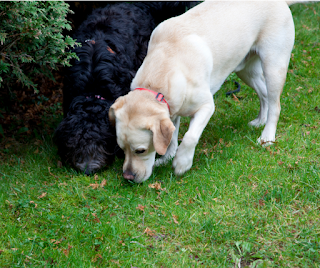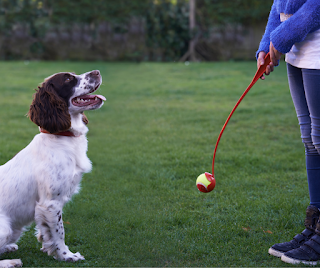7 Top Tips To Help Your Dog's Painful Joints
7 Top Tips To Help Your Dog's Painful Joints
Whether your dog has only recently been diagnosed with Arthritis or another joint condition, or if they have had it for several years, these top tips are sure to make their lives more comfortable:
Pain Relief
Arthritis and other joint conditions are sure to cause your dog pain, so it is vital they're provided with high-quality, effective pain relief to keep their discomfort at bay. This is most commonly in the form of veterinary medications, but many owners find using a combination of medication and complementary therapies helpful.Getting your dog regularly checked at the vets is essential, particularly if they are taking long-term medications. Some medicines have potential side effects that need to be closely monitored.
Dogs are notoriously good at disguising their pain, so it is up to you to keep a close eye on them and ensure they are as pain-free as possible. Just because your dog is still trying to do everything they normally would, doesn't mean they are not in any pain or discomfort.
Raised Bowls
Raising your dog's food and water bowls is likely to reduce the pressure they are putting on their joints by having to stretch down to the floor to eat and drink. There are several different kinds of raised bowls available to purchase, so find which one suits your dog and the space you have. You could also make your own if you enjoy a bit of DIY!Mats and Rugs
Slippery floors are a real hazard for dogs with joint conditions of any age, as they can easily lose their footing and injure themselves. Tiled, laminate, and wooden flooring can all easily be covered with non-slip mats and rugs to make your dog's life easier. Be sure that the mats or rugs you choose are as flat as possible, or else they could also end up being a trip hazard instead!Exercise
Dogs with severe Arthritis or other joint conditions may find it difficult to enjoy the levels of exercise they were once able to. However, this does not mean they should stop being exercised altogether. In fact, gentle exercise has been shown to actually help your dog's joints stay mobile.Their exercise times should be adjusted to better suit them and, you should also consider the terrain they are walking on. Uneven ground, steps, slippery mud, steep inclines, and hard ground should all be avoided if possible, as all of these have the potential to cause injury or increase pressure on their joints.
High-intensity games of fetch that encourage fast running, sudden stops, jumping in the air, and changes of direction should also be limited or ideally stopped completely if possible. Again, all of these movements increase pressure on their joints and can easily cause injuries.
Mental Stimulation
While their physical exercise may need to be reduced or changed, there is no reason why you can't increase their mental stimulation instead. Lickmats, long-lasting chews, snuffle mats, and searching for treats in the garden are all low-intensity enrichment activities. They encourage your dog to move slowly and thoughtfully to keep their body moving gently while exercising their mind.Just because your dog's body may not be able to do the things they once could with ease, does not mean that their brains don't need stimulating anymore either. Enrichment is hugely beneficial for your dog's mental well-being, which is crucial. It also acts as a natural stress reliever, an extra bonus for dogs who may be in pain, encouraging them to relax.
Ramps & Steps
Heavy-duty ramps or steps are a handy tool to help assist your dog. They can be used to help them get in and out of the car, outside into the garden, or even onto the sofa or bed if they are used to lying there with you!Most dogs adjust well to learning how to use a ramp or steps safely, with some careful introductions and positive reinforcement training. In teaching them to use one correctly, you limit the risk of them hurting themselves or further damaging their joints by jumping on and off things.
Beds
Consider changing your dog's bed to an orthopaedic mattress if possible. This should be thick enough for your dog to be comfortable no matter how they decide to lie. It should ideally have low or even no sides, so they can fully stretch out if they wish. They should be easily able to access it, and it should be bigger than the length of your dog, fully outstretched, so their limbs are always supported.Hard plastic beds are a definite no-go for Arthritic dogs or those with joint conditions, as they do not allow them to lie comfortably for extended times or change positions easily. Beds that are really soft and unsupportive should also be avoided.
To find out more about Arthritis management for your dog, check out CAM - Canine Arthritis Management
To keep up to date with my latest blogs, you can follow Charlotte Garner - Canine Author
To view or purchase my book, Canine Contentment - The Essential Guide, click here.










Comments
Post a Comment